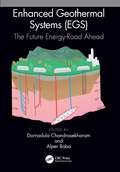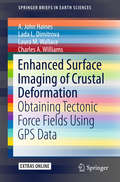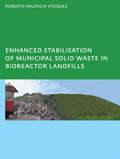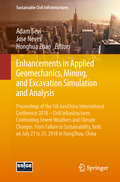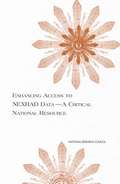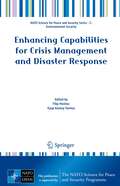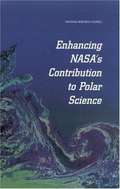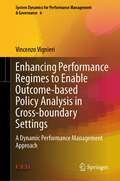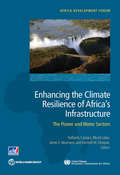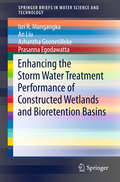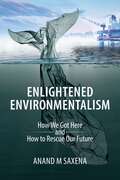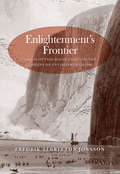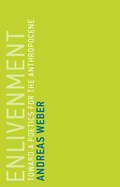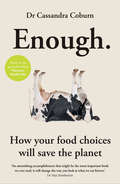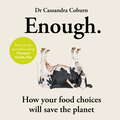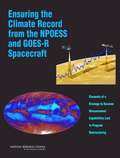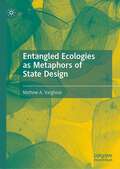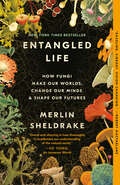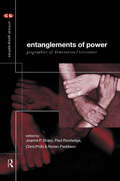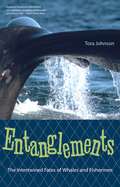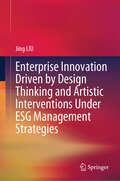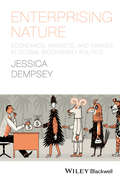- Table View
- List View
Enhanced Geothermal Systems (EGS): The Future Energy-Road Ahead
by Alper Baba Dornadula ChandrasekharamPeter Meisen, Past President, Global Energy Network Institute, asked in 1997, “What if there was an existing, viable technology, that when developed to its highest potential could increase everyone’s standard of living, cut fossil fuel demand and the resultant pollution?” After 23 years of sustained effort by the global scientific community, this is becoming a reality. The technology to extract heat from granite has been revolutionized in the last few years. The classical method of creating fracture networks by hydrofracturing is being replaced by a closed-loop method where fluids are not in contact with the hot granite. Supercritical CO2 is replacing water as a circulating fluid. Certainly, the future energy road is going to be led by highly radiogenic granites. While hydrothermal sources are site-specific and have their limitations, EGS can be initiated anywhere on earth. EGS is removing all such obstacles and, in the future, will provide uninterrupted electricity for all. Energy-deficient countries can have surplus electricity; water-stressed countries can have a perennial freshwater supply; and countries can become food-secure and rise above poverty levels. Countries need not depend on energy imports and can independently evolve into carbon neutral or low carbon societies. The contributions made by experts will help researchers and investors to close the energy demand and supply gap in the very near future by tapping the unlimited energy of the Earth. Opportunities available for investors in Turkey are well documented with field, geophysical, and geochemical data and information on the energy generating capacity of the granite intrusive spread over a cumulative area of 6,910 km2 in western Anatolia. With the signing of the Global Geothermal Alliance (GGA) by several countries during the December 2015 CoP 21 (Conference of Parties) summit in Paris, countries are obliged to reduce CO2 emissions by increasing the footprint of renewable energy in the primary source mix. Information provided in this book will lead the way to establishing a clean energy future for millions of people for sustainable development and help to mitigate crises arising due to food, water, and energy shortage issues. Academic and research institutes will benefit to a large extent from the expertise of the top contributors in this book. This information provided in this book will help to lay the foundation for super-hot EGS research in future.
Enhanced Surface Imaging of Crustal Deformation
by A. John Haines Lada L. Dimitrova Laura M. Wallace Charles A. WilliamsThis book takes an in depth look at a novel methodology for analyzing Global Positioning System (GPS) data to obtain the highest possible resolution surface imaging of tectonic deformation sources without prescribing the nature of either the sources or the subsurface medium. GPS methods are widely used to track the surface expression of crustal deformation at tectonic plate boundaries, and are typically expressed in terms of velocity fields or strain rate fields. Vertical derivatives of horizontal stress (VDoHS) rates at the Earth's surface can also be derived from GPS velocities, and VDoHS rates provide much higher resolution information about subsurface deformation sources than velocities or strain rates. In particular, VDoHS rates allow for high precision estimates of fault dips, slip rates and locking depths, as well as objective characterization of previously unknown (or hidden) tectonic deformation zones.
Enhanced stabilisation of municipal solid waste in bioreactor landfills: UNESCO-IHE PhD Thesis
by Roberto Valencia VazquezMunicipal solid waste entombed in landfills will produce pollution in the form of landfill gas and leachate when the barriers fail in the long term. Bioreactor landfills are an alternative solution to avoid such negative impacts and to achieve a more stable residue, the so-called Final Storage Quality (FSQ) of residues. However, until now the main
Enhancements in Applied Geomechanics, Mining, and Excavation Simulation and Analysis: Proceedings of the 5th GeoChina International Conference 2018 – Civil Infrastructures Confronting Severe Weathers and Climate Changes: From Failure to Sustainability, held on July 23 to 25, 2018 in HangZhou, China (Sustainable Civil Infrastructures)
by Adam Sevi Jose Neves Honghua ZhaoThe book presents a compilation of studies regarding applied geomechanics, mining, and excavation analysis and simulation. The material is suitable for presentation to senior undergraduate and post-graduate students in both mining and geological engineering. It should also be of interest to students of other aspects of Geomechanics and, notably, engineering geologists interested in mining and underground excavation design. Practising mining engineers and rock mechanics engineers involved in mine design may use the book profitably to obtain an appreciation of the current state of engineering knowledge in their area of specialisation. Papers were selected from the 5th GeoChina International Conference on Civil Infrastructures Confronting Severe Weathers and Climate Changes: From Failure to Sustainability, held in July 23-25, 2018 in Hang Zhou, China.
Enhancing Access to NEXRAD Data--A Critical National Resource
by Global Energy Water Cycle Experiment Gewex PanelThe National Academies Press (NAP)--publisher for the National Academies--publishes more than 200 books a year offering the most authoritative views, definitive information, and groundbreaking recommendations on a wide range of topics in science, engineering, and health. Our books are unique in that they are authored by the nation's leading experts in every scientific field.
Enhancing Capabilities for Crisis Management and Disaster Response (NATO Science for Peace and Security Series C: Environmental Security)
by Eyup Kuntay Turmus Filip HostiucScience for Peace and Security (SPS) cooperation brings together NATO & partners to address common security concerns reflected in the so-called SPS Key Priorities. These include emerging security challenges such as terrorism, cyber defense or energy security, as well as human and social aspects of security, support to NATO-led mission and operation, advanced technologies with security applications, and early warning. The SPS project “Advanced Civil Emergency Coordination Pilot in the Western Balkans” addresses several of these areas. As a key regional SPS flagship project, it helps to build capacity in response to a concrete security challenge. The Western Balkans is a region frequently affected by natural disasters and the pilot project provides emergency responders in the region with an incident command system that allows sharing information about disasters in a fast and easy way, enhancing situational awareness and building capacity in the area of civil emergency coordination.
Enhancing NASA's Contributions to Polar Science: A Review of Polar Geophysical Data Sets
by National Research CouncilA report on Enhancing NASA's Contributions to Polar Science
Enhancing Performance Regimes to Enable Outcome-based Policy Analysis in Cross-boundary Settings: A Dynamic Performance Management Approach (System Dynamics for Performance Management & Governance #6)
by Vincenzo VignieriOver the last two decades, the field of public administration has witnessed theoretical and practical changes that have innovated the relationships between public administration and performance management.Dealing with the rising complexity of performance regimes in contemporary public administration requires that policy-makers and their organizations are able to face unpredictable problems impacting on a community’s quality of life. Complex policy issues – such as immigration, pandemics, societal aging, crime, unemployment, and financial crises – cannot be easily solved by quick fixes that are focused only on a short-term and bounded vision of their causes. They rather require “robust” methods to support policy analysis and to affect sustainable community outcomes in cross-boundary settings.As illustrated in this book, Dynamic Performance Management provides a methodological framework enabling policy-makers to outline the causal relationships among policy outcomes, performance drivers, and related strategic resources. Such a modeling approach helps stakeholders to broaden the investigated system boundaries so to balance short- and long-term performance under different result domains.This approach blends performance management and System Dynamics modeling. Several examples and case studies are discussed to enable scholars and practitioners to appreciate the practical implications related to the use of such an approach.
Enhancing the Climate Resilience of Africa's Infrastructure
by Strzepek Rikard Liden Raffaello Cervigni James E. NeumannTo sustain Africa's growth, and accelerate the eradication of extreme poverty, investment in infrastructure is fundamental. In 2010, the Africa Infrastructure Country Diagnostic found that to enable Africa to fill its infrastructure gap, some US$ 93 billion per year for the next decade will need to be invested. The Program for Infrastructure Development in Africa (PIDA), endorsed in 2012 by the continent's Heads of State and Government, lays out an ambitious long-term plan for closing Africa's infrastructure including trough step increases in hydroelectric power generation and water storage capacity. Much of this investment will support the construction of long-lived infrastructure (e.g. dams, power stations, irrigation canals), which may be vulnerable to changes in climatic patterns, the direction and magnitude of which remain significantly uncertain. Enhancing the Climate Resilience of Africa 's Infrastructure evaluates -using for the first time a single consistent methodology and the state-of-the-arte climate scenarios-, the impacts of climate change on hydro-power and irrigation expansion plans in Africa's main rivers basins (Niger, Senegal, Volta, Congo, Nile, Zambezi, Orange); and outlines an approach to reduce climate risks through suitable adjustments to the planning and design process. The book finds that failure to integrate climate change in the planning and design of power and water infrastructure could entail, in scenarios of drying climate conditions, losses of hydropower revenues between 5% and 60% (depending on the basin); and increases in consumer expenditure for energy up to 3 times the corresponding baseline values. In in wet climate scenarios, business-as-usual infrastructure development could lead to foregone revenues in the range of 15% to 130% of the baseline, to the extent that the larger volume of precipitation is not used to expand the production of hydropower. Despite the large uncertainty on whether drier or wetter conditions will prevail in the future in Africa, the book finds that by modifying existing investment plans to explicitly handle the risk of large climate swings, can cut in half or more the cost that would accrue by building infrastructure on the basis of the climate of the past.
Enhancing the Storm Water Treatment Performance of Constructed Wetlands and Bioretention Basins
by An Liu Isri R. Mangangka Ashantha Goonetilleke Prasanna EgodawattaThis book identifies the key hydrologic and hydraulic factors which influence the performance of stormwater quality treatment systems such as constructed wetlands and bioretention basins. Mathematical relationships derived using conceptual models underpinned by fundamental hydraulic theory are presented to predict treatment performance. The key highlights of the book will include the identification of the linkages between influential hydrologic and hydraulic factors for constructed wetlands and bioretention basins to support more accurate prediction of treatment performance and effective design of these types of stormwater treatment systems. Furthermore, this book will showcase an innovative approach for using conceptual models to analyze stormwater treatment system performance.
Enlightened Environmentalism: How We Got Here and How to Rescue Our Future
by Anand M SaxenaA continuous search for comforts, conveniences, and novel objects has brought humanity to a state where a continuation of this process endangers the welfare, perhaps even survival of humanity. The present lifestyle of profligate consumption, aided by deve
Enlightenment's Frontier
by Dr Fredrik Albritton JonssonEnlightenment's Frontier is the first book to investigate the environmental roots of the Scottish Enlightenment. What was the place of the natural world in Adam Smith's famous defense of free trade? Fredrik Albritton Jonsson recovers the forgotten networks of improvers and natural historians that sought to transform the soil, plants, and climate of Scotland in the eighteenth century. The Highlands offered a vast outdoor laboratory for rival liberal and conservative views of nature and society. But when the improvement schemes foundered toward the end of the century, northern Scotland instead became a crucible for anxieties about overpopulation, resource exhaustion, and the physical limits to economic growth. In this way, the rise and fall of the Enlightenment in the Highlands sheds new light on the origins of environmentalism.
Enlivenment: Toward a Poetics for the Anthropocene (Untimely Meditations #16)
by Andreas WeberA new understanding of the Anthropocene that is based on mutual transformation with nature rather than control over nature. We have been told that we are living in the Anthropocene, a geological era shaped by humans rather than by nature. In Enlivenment, German philosopher Andreas Weber presents an alternative understanding of our relationship with nature, arguing not that humans control nature but that humans and nature exist in a commons of mutual transformation. There is no nature–human dualism, he contends, because the fundamental dimension of existence is shared in what he calls "aliveness." All subjectivity is intersubjectivity. Self is self-through-other. Seeing all beings in a common household of matter, desire, and imagination, an economy of metabolic and economic transformation, is “enlivenment.” This perspective allows us to move beyond Enlightenment-style thinking that strips material reality of any subjectivity.To take this step, Weber argues, we need to supplant the concept of techné with the concept of poiesis as the element that brings forth reality. In a world not divided into things and ideas, culture and nature, reality arises from the creation of relationships and continuous fertile transformations; any thinking in terms of relationships comes about as a poetics. The self is always a function of the whole; the whole is equally a function of the individual. Only this integrated freedom allows humanity to reconcile with the natural world.This first English edition of Enlivenment has been expanded and updated from the German edition.
Enough Is Enough: Building a Sustainable Economy in a World of Finite Resources
by Rob Dietz Daniel W. O’NeillIt’s time for a new kind of economy We’re overusing the earth’s finite resources, and yet excessive consumption is failing to improve our lives. In Enough Is Enough, Rob Dietz and Dan O’Neill lay out a visionary but realistic alternative to the perpetual pursuit of economic growth—an economy where the goal is not more but enough. They explore specific strategies to conserve natural resources, stabilize population, reduce inequality, fix the financial system, create jobs, and more—all with the aim of maximizing long-term well-being instead of short-term profits. Filled with fresh ideas and surprising optimism, Enough Is Enough is the primer for achieving genuine prosperity and a hopeful future for all. “Humans seem to be intent on confirming the argument of biologist Ernst Mayr that higher intelligence may be a lethal mutation. But the grim prognosis is not inevitable. This lucid, informed, and highly constructive book shows that with the will to act, solutions can be found to build a steady-state economy geared to meeting human needs.” —Noam Chomsky “Rob Dietz and Dan O’Neill bring clarity and style to their impassioned and meticulous analysis, offering the way to a better quality of life and a sustainable future for all.” —Kate Pickett, Professor of Epidemiology, University of York; cofounder, The Equality Trust; and coauthor of The Spirit Level “Dietz and O’Neill create a remarkable vision—a world with enough prosperity and happiness for everyone, not just for a few. This book will restore your hope in the future and give you specific things you can do to help!” —Thom Hartmann, internationally syndicated talk show host and author of twenty-four books
Enough: How your food choices will save the planet
by Dr Cassandra Coburn***'An astonishing accomplishment that might be the most important book we ever read, it will change the way you look at what we eat forever.' - Dr Max Pemberton'A wonderfully written guide for anyone who wants to eat better and save the world at the same time. Essential reading for anyone who cares about the planet.' - Thomasina MiersHow changing what you eat can save the planetOur food production systems are the single biggest cause of environmental change, while diseases linked to our eating habits are at epidemic levels and increasing. Enough. uses the latest scientific research to address this vital question: can we provide a growing population with a healthy diet from sustainable food systems? Fortunately for us all, the answer is yes. Enough. shows exactly how we can tackle both of these urgent, interconnected challenges at the same time. Using a seminal piece of research published in 2019, the Planetary HealthDiet (PHD), Dr Coburn reveals the hidden consequences of our food choices, and how we can easily make changes which are better for ourselves and the planet. She details which food groups we should be eating, which we should avoid - and why. Changing our way of eating is something that every one of us has the power to do. Enough. is a clear, ultimately hopeful and hugely important roadmap for both own health - and the planet's.
Enough: How your food choices will save the planet
by Dr Cassandra Coburn***'An astonishing accomplishment that might be the most important book we ever read, it will change the way you look at what we eat forever.' - Dr Max Pemberton'A wonderfully written guide for anyone who wants to eat better and save the world at the same time. Essential reading for anyone who cares about the planet.' - Thomasina MiersHow changing what you eat can save the planetOur food production systems are the single biggest cause of environmental change, while diseases linked to our eating habits are at epidemic levels and increasing. Enough. uses the latest scientific research to address this vital question: can we provide a growing population with a healthy diet from sustainable food systems? Fortunately for us all, the answer is yes.Enough. shows exactly how we can tackle both of these urgent, interconnected challenges at the same time. Using a seminal piece of research published in 2019, the Planetary HealthDiet (PHD), Dr Coburn reveals the hidden consequences of our food choices, and how we can easily make changes which are better for ourselves and the planet. She details which food groups we should be eating, which we should avoid - and why. Changing our way of eating is something that every one of us has the power to do. Enough. is a clear, ultimately hopeful and hugely important roadmap for both own health - and the planet's.
Enough: How your food choices will save the planet
by Dr Cassandra CoburnWe produce and eat unhealthy food, killing ourselves and the planet in the process. Food production systems are the single biggest cause of environmental change to the planet. And the food we are producing is killing us - more than a quarter of the world's population is overweight or obese, and deaths from stroke, heart attack, cancer, diabetes etc are at epidemic levels. It's easy to feel helpless. In 2019 a seminal piece of research was published which, for the first time, made clear recommendations for a way to produce food and to eat that would save both the planet's resources and our own health. The Planetary Health Diet was the culmination of years of research by 37 eminent scientists of various backgrounds into this question - can we provide a growing population with a healthy diet from sustainable food systems? The answer is yes. Enough is a practical explanation of the Planetary Health Diet's research, allowing everyone to understand the science and to adopt its recommendations in our daily lives. The PHD specifies the food groups we should be eating. But what does a diet composed of, for example, 30% carbohydrates really look like? Which carbs, exactly? The diet is largely plant-based but does encompass meat and fish - but how many servings? It also explains what the nine 'planetary boundaries' are, that our food production systems must not exceed - from the quantities of nitrogen and phosphorus in the ecosystem to freshwater use. As a scientist and journalist Dr Cassandra Coburn is brilliantly placed to provide this clear, ultimately hopeful and hugely important roadmap for own future health, and that of the planet. (p) 2021 Octopus Publishing Group
Ensuring the Climate Record from the NPOESS and GOES-R Spacecraft: Elements of a Strategy to Recover Measurement Capabilities Lost in Program Restructuring
by National Research Council of the National AcademiesIn 2000, the nation's next-generation National Polar-orbiting Operational Environmental Satellite System (NPOESS) program anticipated purchasing six satellites for $6.5 billion, with a first launch in 2008. By November 2005, however, it became apparent that NPOESS would overrun its cost estimates by at least 25 percent. In June 2006, the planned acquisition of six spacecraft was reduced to four, the launch of the first spacecraft was delayed until 2013, and several sensors were canceled or descoped in capability. Based on information gathered at a June 2007 workshop, "Options to Ensure the Climate Record from the NPOESS and GOES-R Spacecraft," this book prioritizes capabilities, especially those related to climate research, that were lost or placed at risk following the 2006 changes. This book presents and recommends a prioritized, short-term strategy for recovery of crucial climate capabilities lost in the NPOESS and GOES-R program descopes. However, mitigation of these recent losses is only the first step in establishing a viable long-term climate strategy-one that builds on the lessons learned from the well-intentioned but poorly executed merger of the nation's weather and climate observation systems.
Entangled Ecologies as Metaphors of State Design
by Mathew A. VargheseThis book takes a unique approach to the ethnographic and analytical explorations of ecologies in the making. The core theme of the work will be the emerging anthropocene contexts that simultaneously bring unprecedented human interactions with the non-human as well as the emergence of hybrid ecologies. There will be dependence on existing literature, own ethnographic work that has already went into this, the closer introspection of immediate geographies as well as the pertinent debates. There has been a reconfiguration of meaning and nature of spaces in the context of social relations produced by neo-liberal globalization. States as they have been are transforming and are influenced by policies made beyond borders. This work is marked out by careful enquiry on ecologies in the making with the backdrop of distinct regional developmentalist trajectories as well as specific ethnography from Kerala, South-West India.
Entangled Life: How Fungi Make Our Worlds, Change Our Minds & Shape Our Futures
by Merlin SheldrakeA mind-bending journey into the hidden universe of fungi, &“one of those rare books that can truly change the way you see the world around you&” (Helen Macdonald, author of H Is for Hawk).&“Dazzling, vibrant, vision-changing . . . a remarkable work by a remarkable writer, which succeeds in springing life into strangeness again.&”—Robert Macfarlane, author of Underland When we think of fungi, we likely think of mushrooms. But mushrooms are only fruiting bodies, analogous to apples on a tree. Most fungi live out of sight, yet make up a massively diverse kingdom of organisms that supports and sustains nearly all living systems. Fungi provide a key to understanding the planet on which we live, and the ways we think, feel, and behave.In Entangled Life, the brilliant young biologist Merlin Sheldrake shows us the world from a fungal point of view, providing an exhilarating change of perspective. Sheldrake&’s vivid exploration takes us from yeast to psychedelics, to the fungi that range for miles underground and are the largest organisms on the planet, to those that link plants together in complex networks known as the &“Wood Wide Web,&” to those that infiltrate and manipulate insect bodies with devastating precision.Fungi throw our concepts of individuality and even intelligence into question. They are metabolic masters, earth makers, and key players in most of life&’s processes. They can change our minds, heal our bodies, and even help us remediate environmental disaster. By examining fungi on their own terms, Sheldrake reveals how these extraordinary organisms—and our relationships with them—are changing our understanding of how life works.Praise for Entangled Life&“Fungi are everywhere, and Merlin Sheldrake is an ideal guide to their mysteries. He&’s passionate, deeply knowledgeable, and a wonderful writer.&”—Elizabeth Kolbert, author of The Sixth Extinction&“I was completely unprepared for Sheldrake&’s book. It rolled me over like a tsunami, leaving the landscape rearranged but all the more beautiful.&”—Nicholas Humphrey, Emeritus Professor of Psychology at the London School of Economics and author of A History of the Mind and Soul Dust&“Sheldrake&’s charm and curiosity make for a book that is delightful to read but also grand and dizzying in how thoroughly it recalibrates our understanding of the natural world and the often overlooked organisms within it.&”—Ed Yong, author of I Contain Multitudes
Entanglement in Spin Chains: From Theory to Quantum Technology Applications (Quantum Science and Technology)
by Abolfazl Bayat Sougato Bose Henrik JohannessonThis book covers recent developments in the understanding, quantification, and exploitation of entanglement in spin chain models from both condensed matter and quantum information perspectives. Spin chain models are at the foundation of condensed matter physics and quantum information technologies and elucidate many fundamental phenomena such as information scrambling, quantum phase transitions, and many-body localization. Moreover, many quantum materials and emerging quantum devices are well described by spin chains. Comprising accessible, self-contained chapters written by leading researchers, this book is essential reading for graduate students and researchers in quantum materials and quantum information. The coverage is comprehensive, from the fundamental entanglement aspects of quantum criticality, non-equilibrium dynamics, classical and quantum simulation of spin chains through to their experimental realizations, and beyond into machine learning applications.
Entanglements of Power: Geographies of Domination/Resistance (Critical Geographies)
by Ronan Paddison Joanne Sharp Paul Routledge Chris PhiloThis book argues that practices of resistance cannot be separated from practices of domination, and that they are always entangled in some configuration. They are inextricably linked, such that one always bears at least a trace of the other that contaminates or subverts it.The team of contributors explore themes of identity, embodiment, organisation, colonialism, and political transformation, examining them from historical, contemporary and more abstract perspectives within a wide geographical and cultural spectrum. Case studies include German Reunification; Jamaican Yardies on British Television; Victorian Sexuality and Moralisation in Cremorne Gardens; Ethnicity, Gender and Nation in Ecuador; Sport as Power; the film Falling Down.Entanglements of Power presents an exciting and challenging account of the symbiotic relationship between domination and resistance, and contextualises this within the parameters of geography with a rich body of case-study material and a respected team of contributors.
Entanglements: The Intertwined Fates of Whales and Fishermen
by Tora JohnsonEntanglements explores the clash of cultures and personalities among fishermen, scientists, and whale advocates struggling to save both the endangered North Atlantic right whale and the livelihoods of thousands of Atlantic coastal families. By most counts, about 300 of these whales remain in the North Atlantic, and scientists warn that collisions with fishing gear are contributing to their decline.The political climate that surrounds the world's most endangered large whale is contentious, complex, and heartrending. Without pointing fingers or laying blame, Tora Johnson explores every side of the issue. She takes us to sea with fishermen who struggle to stay in business, setting traps and gillnets in the whale's habitat, and with members of the rescue teams who attempt to cut away deadly rope and net from whales in the wild. Weaving their stories and her personal observations into a discussion of the science and history of the conflict, she offers an admirable balance of perceptions, backgrounds, and agendas. Her thoughtful discussion of the plight of fishermen and whales and of the frustrations between fishing communities and conservationists presents an authentic microcosm of the global conflict between human demands on the environment and nature's finite capacity for supporting those demands.
Enterprise Innovation Driven by Design Thinking and Artistic Interventions Under ESG Management Strategies
by Jing LIUThis study examines the management strategies of representative companies in each country to gain insight into the value of ESG management strategies for corporate innovation and how design thinking and artistic interventions can foster creativity both internally and externally to drive corporate innovation. It compares the current state of design and/or art-driven innovation strategies in Korean and Chinese companies under ESG frameworks, and then discusses the challenges of corporate innovation in these countries. Based on the results of the comparison, the study suggests the future of corporate innovation in China.
Enterprising Nature: Economics, Markets, and Finance in Global Biodiversity Politics (Antipode Book Series)
by Jessica DempseyWinner of the 2018 James M. Blaut Award in recognition of innovative scholarship in cultural and political ecology!Enterprising Nature explores the rise of economic rationality in global biodiversity law, policy and science. To view Jessica's animation based on the book's themes please visit http://www.bioeconomies.org/enterprising-nature/ Examines disciplinary apparatuses, ecological-economic methodologies, computer models, business alliances, and regulatory conditions creating the conditions in which nature can be produced as enterprising Relates lively, firsthand accounts of global processes at work drawn from multi-site research in Nairobi, Kenya; London, England; and Nagoya, Japan Assesses the scientific, technical, geopolitical, economic, and ethical challenges found in attempts to ‘enterprise nature’ Investigates the implications of this ‘will to enterprise’ for environmental politics and policy
